Rolls Royce Car Symbol Meaning: Explain!
The Rolls Royce car symbol is renowned worldwide, symbolizing the pinnacle of automotive luxury and craftsmanship. The iconic emblem consists of two overlapping Rs, which stand for the company’s founders, Charles Rolls and Henry Royce.
The emblem is crowned by the Spirit of Ecstasy, a figurine that represents the essence of the brand: elegance, grace, and the pursuit of perfection.
The emblem of Rolls Royce is not merely a logo; it encapsulates the brand’s storied history and commitment to excellence:
The emblem has undergone subtle changes over the years, but its core elements remain, ensuring that the symbol of Rolls Royce continues to convey its timeless luxury and elegance.
The Rolls Royce emblem epitomizes the zenith of automotive opulence, mirroring the brand’s enduring legacy and exclusive status.
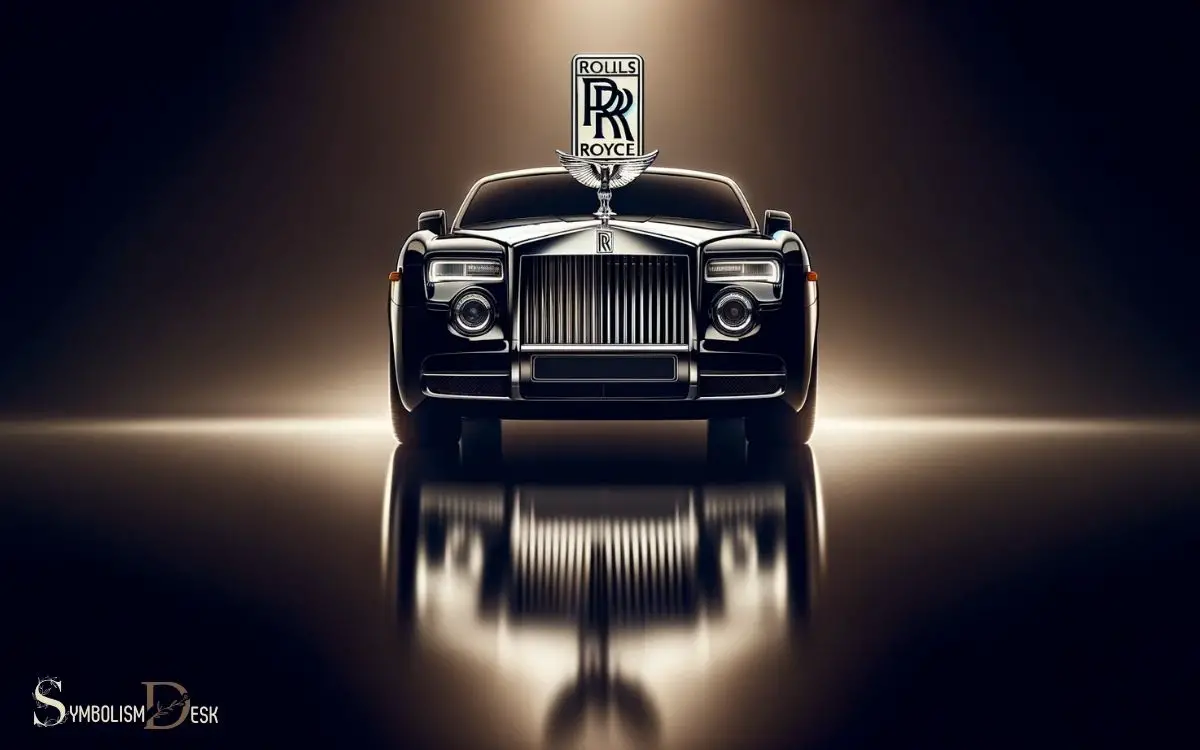
Key Takeaway
The History of the Spirit of Ecstasy
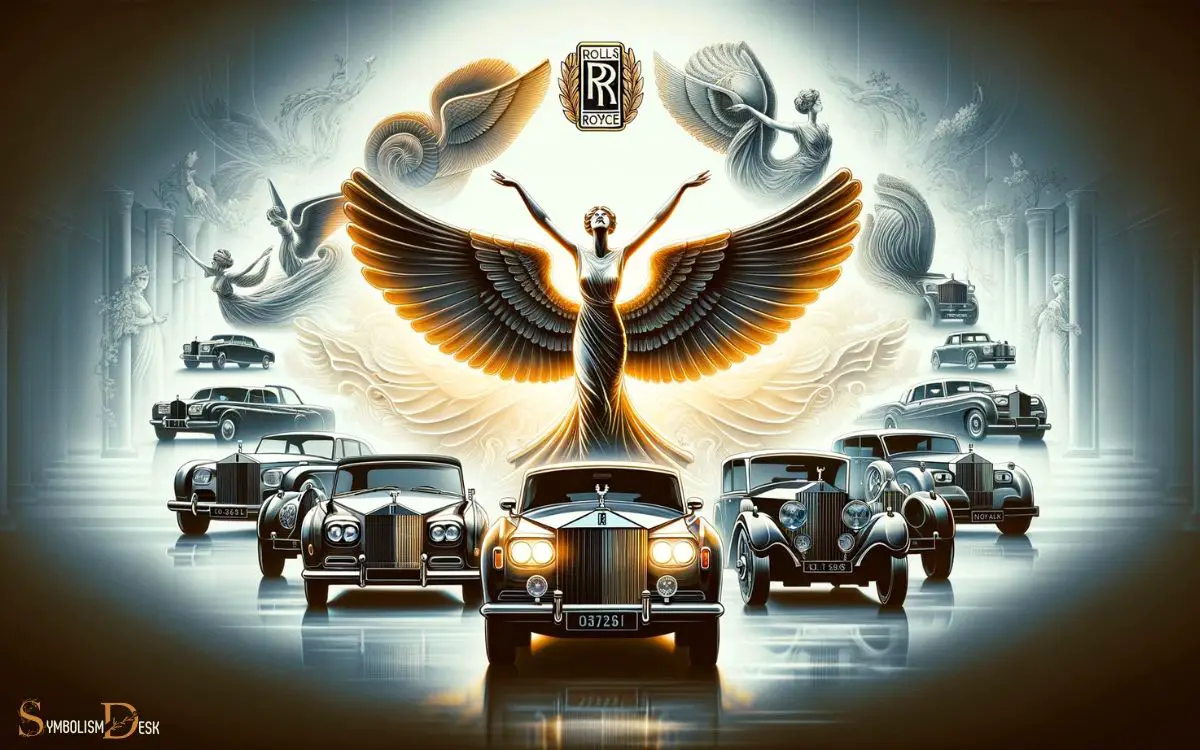
The history of the Spirit of Ecstasy dates back to the early 20th century when it was first commissioned by Lord Montagu for the bonnet of his car.
Designed by Charles Robinson Sykes, this iconic emblem was originally named “The Whisper” and depicted a woman with her index finger to her lips.
It is said to be a representation of Eleanor Velasco Thornton, the personal secretary and lover of John Walter Edward Scott-Montagu, 2nd Baron Montagu of Beaulieu.
The design symbolizes elegance, grace, and luxury, characteristics synonymous with the Rolls-Royce brand.
Over the years, the figurine underwent subtle changes in its appearance, reflecting advancements in manufacturing techniques. Today, the Spirit of Ecstasy adorns the bonnet of every Rolls-Royce car, serving as an emblem of automotive excellence and heritage.
Symbolism in the Rolls Royce Emblem
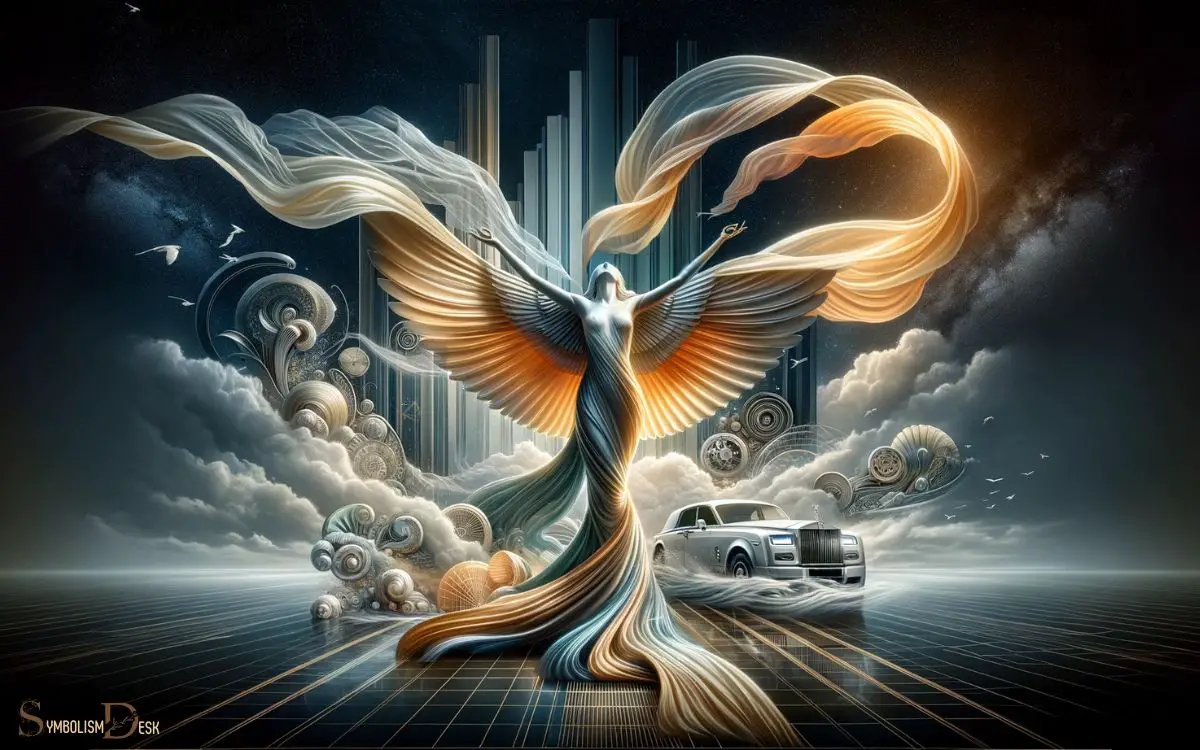
A symbol of luxury and prestige, Rolls Royce’s emblem holds significant historical and cultural meaning. The emblem features the iconic Spirit of Ecstasy, a figurine depicting a woman leaning forward with outstretched wings.
This emblem symbolizes elegance, speed, and grace, reflecting the brand’s commitment to uncompromising quality and excellence.
The woman’s flowing attire and the sense of movement in her posture embody the spirit of adventure and the pursuit of perfection that Rolls Royce represents.
Furthermore, the emblem’s presence atop the car’s radiator grille signifies the brand’s focus on craftsmanship and attention to detail.
Additionally, the Spirit of Ecstasy’s position on the grille also serves as a safety feature, retracting into the grille in the event of a collision.
This symbolism encapsulates the essence of Rolls Royce’s commitment to luxury, innovation, and timeless design.
Evolution of the Rolls Royce Symbol
How has the Rolls Royce symbol evolved over time? The Rolls Royce emblem has undergone significant changes throughout its history, reflecting the evolution of the brand.
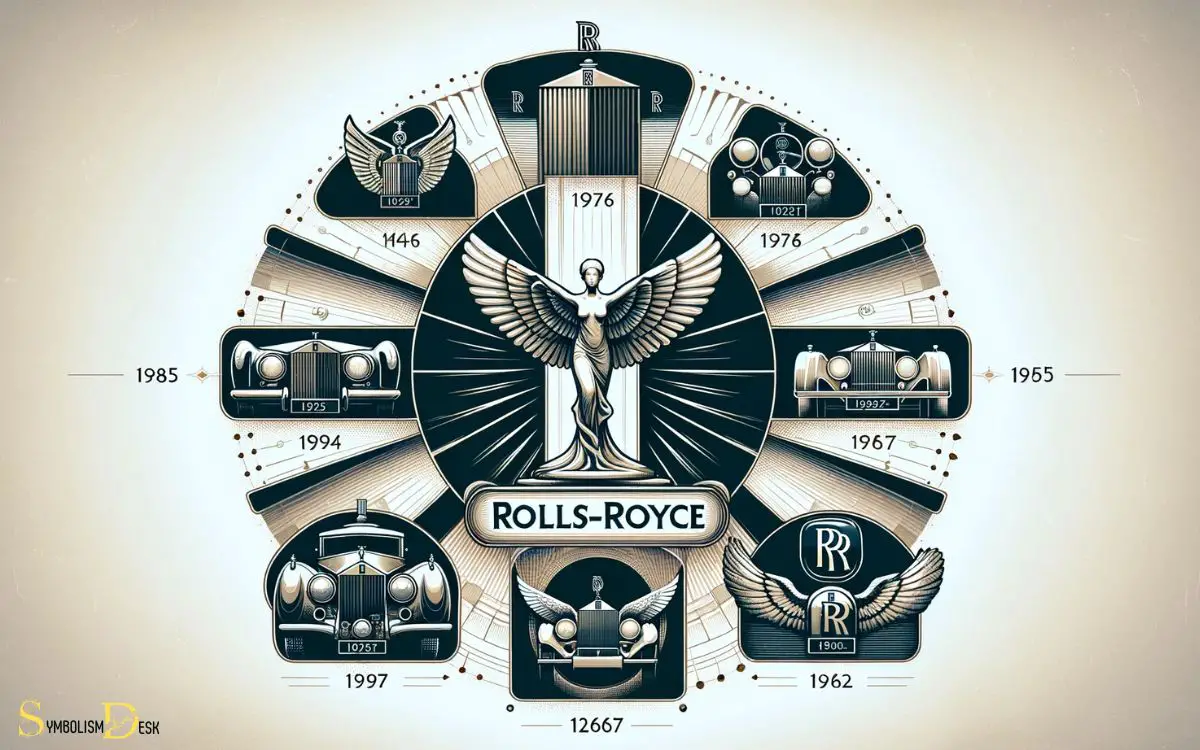
The evolution of the symbol can be summarized as follows:
- The Rolls Royce “The Spirit of Ecstasy”: Introduced in 1911, this iconic emblem featured a graceful figurine leaning forward with arms outstretched behind her. It symbolized elegance and speed, capturing the essence of the brand.
- Modernization and Refinement: Over the years, the emblem underwent subtle refinements to enhance its sophistication and luxury appeal while maintaining its classic elements.
- Adaptation to Contemporary Design: In recent years, Rolls Royce has adapted the emblem to align with contemporary design trends, ensuring it remains a symbol of prestige and excellence in the automotive industry.
The Role of the Symbol in Brand Identity
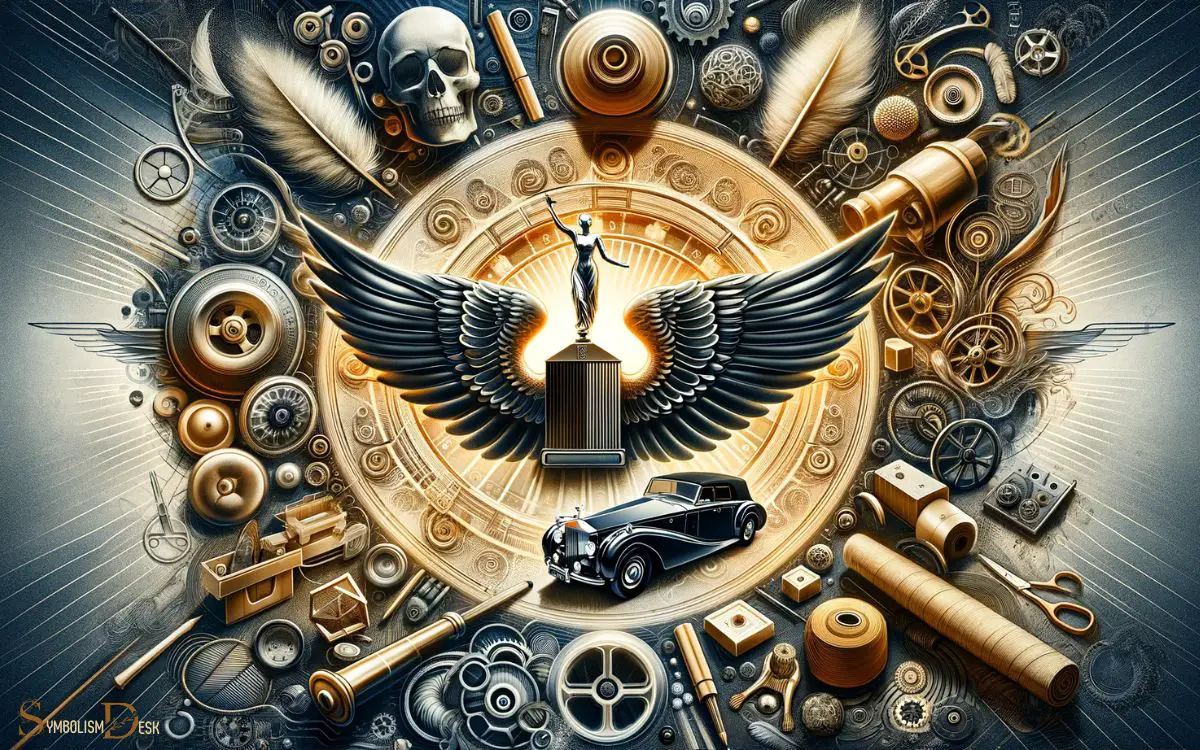
Rolls Royce’s symbol plays a crucial role in defining the brand’s identity and communicating its values to consumers.
The Spirit of Ecstasy emblem, with its graceful and elegant design, embodies the brand’s commitment to luxury, elegance, and exceptional quality.
The symbol has become synonymous with opulence and prestige, creating a strong visual association with the brand. It serves as a powerful differentiator, setting Rolls Royce apart in the luxury automobile market. The emblem’s craftsmanship and attention to detail further reinforce the image of uncompromising excellence, appealing to discerning customers who seek the pinnacle of sophistication. Much like the cultural significance of icons in other contexts, such as the ‘SimCity 4 no car symbol meaning,’ which conveys a lack of connectivity or transit options, the Rolls Royce symbol conveys a definitive message of privilege and exclusivity. This iconic representation encapsulates both tradition and modernity, ensuring its timeless appeal in a competitive market.
The symbol’s presence on every Rolls Royce vehicle reinforces the brand’s image of exclusivity and craftsmanship. It evokes a sense of heritage and tradition, appealing to consumers who value timeless elegance and sophistication.
Overall, the symbol is an integral part of Rolls Royce’s brand identity, effectively conveying the brand’s values and creating a lasting impression on consumers.
Cultural Impact of the Rolls Royce Emblem
The cultural impact of the Rolls Royce emblem extends beyond mere symbolism to reflect the brand’s global influence and historical significance.
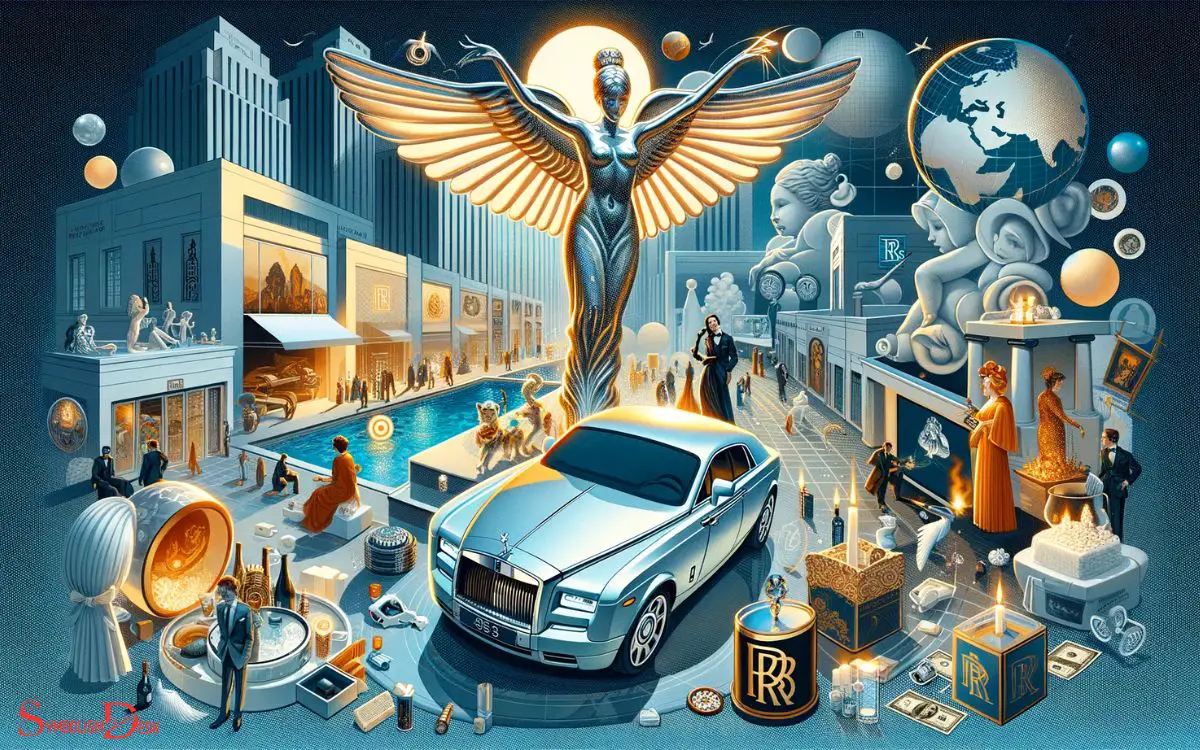
This iconic emblem, known as the “Spirit of Ecstasy,” has contributed to the following:
- Status Symbol: The emblem has become synonymous with luxury, wealth, and exclusivity, reinforcing Rolls Royce’s position as a status symbol worldwide.
- Heritage and Tradition: The emblem embodies the heritage and tradition of Rolls Royce, evoking a sense of nostalgia and timeless elegance for enthusiasts and consumers alike.
- Global Recognition: The emblem’s widespread recognition transcends cultural and linguistic barriers, serving as a universal symbol of automotive excellence and craftsmanship.
The enduring cultural impact of the Rolls Royce emblem underscores its significance in shaping the brand’s identity and perception across diverse societies and generations.
Conclusion
The Rolls Royce car symbol holds a rich history and deep symbolism that has evolved over time to become an iconic representation of luxury and excellence.
While some may argue that the emblem is outdated in today’s modern society, its cultural impact and role in the brand’s identity continue to hold significant value for Rolls Royce enthusiasts and customers worldwide.






